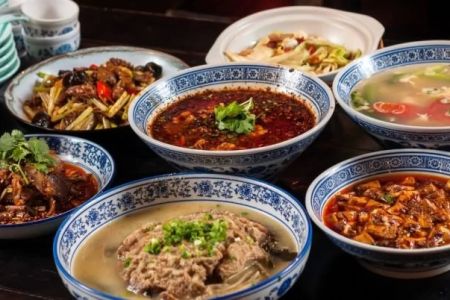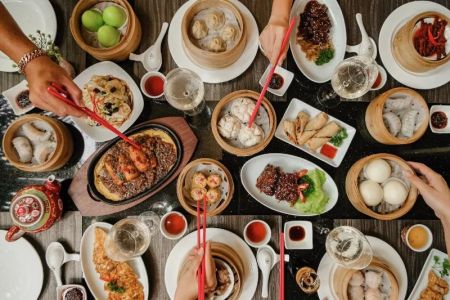- 1 - Understanding-Allergens-in-Chinese-Food
- 2 - Common-Allergens-Found-in-Chinese-Cuisine-USA
- 3 - Examples-of-Allergen-Friendly-Chinese-Dishes
- 5 - Tips-for-Managing-Food-Allergies-When-Eating-Chinese-Food
- 6 - How-Chinese-Food-Supports-Allergy-Conscious-Dining
1. Understanding Allergens in Chinese Food
Chinese cuisine is beloved across the USA for its rich flavors and variety, but it also includes several common allergens that can pose risks for sensitive diners. Understanding the types of allergens present in traditional Chinese dishes helps consumers make safer choices. The challenge lies in the complex recipes that often combine multiple ingredients, including soy, shellfish, peanuts, and gluten.
With increasing awareness of food allergies, many Chinese restaurants in the USA now offer allergen menus or clearly label dishes to aid diners. This transparency empowers guests to enjoy Chinese food without fear, highlighting the importance of clear allergen information tailored for the American market.
2. Common Allergens Found in Chinese Cuisine USA
Some of the most prevalent allergens in Chinese food include soy sauce (containing wheat and soy), peanuts and tree nuts (used in sauces and garnishes), shellfish (such as shrimp and crab), eggs, and sesame. These ingredients are staples in many popular dishes like Kung Pao Chicken, Egg Foo Young, and Shrimp Fried Rice.
Restaurants in the USA often face the challenge of cross-contamination due to shared cooking equipment, so allergen-conscious diners must be vigilant. Recognizing these common allergens helps diners avoid adverse reactions and communicate effectively with restaurant staff.
3. Examples of Allergen-Friendly Chinese Dishes
While some dishes are rich in allergens, several traditional Chinese foods can be adapted or naturally exclude common triggers. For example, steamed vegetables or plain steamed rice are usually safe options. Many restaurants offer dishes made with tofu or chicken without soy-based sauces to accommodate soy allergies.
Gluten-free options might include certain stir-fries with tamari sauce instead of soy sauce. Allergy-friendly dishes require clear communication with the kitchen, and more establishments are willing to modify recipes to meet dietary needs.
4. Reading and Interpreting Chinese Food Allergen Menus
Chinese restaurants in the USA have started including allergen menus, either printed or online, specifying which dishes contain nuts, gluten, soy, or shellfish. Understanding these menus involves knowing the symbols or abbreviations used for allergens and asking questions when in doubt.
For example, a menu might indicate (GF) for gluten-free or use icons to show nut-free dishes. Diners should also inquire about preparation methods to ensure no cross-contact occurs, making allergen menus an essential tool for safe dining experiences.
5. Tips for Managing Food Allergies When Eating Chinese Food
To manage allergies effectively when enjoying Chinese cuisine, it is crucial to communicate clearly with restaurant staff about your dietary restrictions. Calling ahead or discussing your allergy with the server can prevent misunderstandings. Carrying allergy cards that specify ingredients to avoid is also helpful.
Choosing simple dishes with fewer ingredients reduces risk, and avoiding fried items cooked in shared oil can further minimize cross-contamination. Being informed about common allergens and proactive in requests helps ensure a safe and enjoyable meal.
6. How Chinese Food Supports Allergy-Conscious Dining
Many Chinese restaurants in the USA have embraced allergy-conscious dining by training staff, providing detailed allergen information, and offering customizable menu options. This shift aligns with growing consumer demand for transparency and inclusivity.
Platforms like Chinese Food provide resources and product recommendations for allergy-sensitive consumers, helping them discover safe dining choices and related services. This collaborative approach enhances the dining experience, allowing everyone to savor the delights of Chinese cuisine without compromise.







